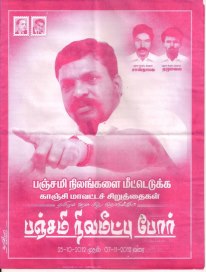Jason Keith Fernandes
I am always afraid when I go to watch a film that features Goa or Goans, because of the host of problems that plague their representation. These problems were more than painfully obvious in the recent films Finding Fanny (2014) and The Coffin Maker (2011). As in these films Goa is invariably depicted as a land of natural beauty, a veritable paradise. This representation hides not only the challenges being posed to its environment, but also the profound cultural conflicts that are ripping resident communities apart. For their part, Goans are depicted as fun and pleasure-loving folk, non-achievers given to drink, of easy virtue, and marked by childlike simplicity. Such a representation effaces the fact that far from being easy, Goan communities, Catholic and others, are in fact marked by strong moral codes that regulate sexual behaviour.

It was thus with relief that I concluded my viewing of Nachom-ia Kumpasar (Let’s Dance to the Rhythm), the latest Konkani language film directed by Bradroy Barretto. A musical, the film is bereft of the problematic and insulting clichés that guide so many Indian language films about Goa and Goans, and is a must see since it is a fabulous contribution to Goan, and Konkani language, culture.
There are two tensions that guide the narrative of the film. The first is the love affair between the crooner Donna and the musician and composer Lawry Vaz. This love affair provides the meat for the entire film, regaling the audience through the 164 odd minutes of the film. The other tension, however, and in my opinion the more interesting, is that of the complicated relationship between the Goan, and in particular the Goan Catholic, and the Indian state. Indeed, I would argue that the love story is merely a foil for the more assertive political complaint.
The film begins with a grouse; that Goan musicians who contributed substantially to the unforgettable melodies of the Hindi film industry were, and still have, not been given their due. Despite Goans contributing to writing, composing, and arranging the music, the credits invariably went to the established names within the film industry. But this is not all; at the conclusion, the film informs us that the brilliant music that poured out of the Goans in Bombay since the 1930s was forced to suffer a sudden and abrupt death thanks to the Prohibition that was imposed in Bombay by the chief minister Morarji Desai in 1950. Prohibition ensured that the night clubs in the city had to shut down, forcing the destruction of the cultural life of the city that these Goan musicians had contributed vibrantly to. This cultural life has been lavishly documented by Naresh Fernandes in Taj mahal Foxtrot: The story of Bombay’s Jazz Age (2011). With no avenues for live performances, these musicians took up employment in the film industry. Once again, despite their role in producing the cult hits that went on to define the soundscape of Hindi film music, these musicians remained unacknowledged. The final words are particularly poignant: “After a final flourish in the 70s, the curtains slowly came down.There was no finale. No calls for an encore. And no applause.”
In presenting this complaint to the larger public, the film makes a more profound contribution than it may have realised. It is articulating a long held, but rarely voiced, opinion that the contributions of Goan Catholics to India are often ignored, and their cultural life not considered valid, or even legitimate. What the film does is to make obvious that the ignoring was not unconscious but in fact a systemic activity. To this extent it draws attention to the injustices that have governed the operation of the Indian state, where some communities are marginalised and erased, even as their works and efforts are appropriated by the North Indian upper-caste groups who seem to have emerged as the ultimate beneficiaries from the creation of post-colonial India.
A common response to political complaints that are articulated by marginalised groups, and especially in the case of Goans who voice protest about the way in which they are represented, is to dismiss the complaints. What Nachom-ia Kumpasar also does, though perhaps unconsciously, is to mount a rejoinder to the filmic representations of Goans. If the film Bobby (1973) set up a standard for how Goan, and Catholic, women in India were understood, then Nachom-ia offers an alternative way in which to deal with extra-marital sexual relations. As indicated earlier, the film revolves around the love story of Donna and Lawry. However, unbeknownst, to most characters in the film, until it is far too late,Lawry is in fact a married man. This crushes Donna, even more so when she realises that Lawry has not only been hiding the fact of his marriage, but persists in the affair whilealso hiding the fact that his wife is pregnant. It is only when Lawry is congratulated by members of the band that he and Donna belong too that Donna realises that she has once again been duped by the man she loves. The tears that Donna sheds, the portrayal of the conflicts that Lawry encounters, and the statements of a variety of characters in the film, clearly indicate that love leading to marriage is the ideal within the community that Donna and Lawry inhabit. Rather than offer up a caricature of a community, the film engages with the conflicts that often crop up in communities, whether Goan or otherwise.
The other element of the caricature of Goans and Indian Christians that the film engages with is the relationship of Goans to alcohol. Just as in the lives of most Goan Catholics, alcohol is present throughout the film, be it when persons are drinking at home, at feasts, or in the public space of the tavern. The naturalness of alcohol in social life, as well as the virtues of drink in moderation, are in fact actively highlighted by the presence of the lone alcoholic in the film. The fact that he is the sole alcoholic makes the eloquent point that while drink is ubiquitous in the Goan lifestyle, not everyone is an alcoholic. The advice that this alcoholic gives Donna when she begins her own disastrous descent into alcoholism makes the relationship between the Goans and alcohol very clear. In the words of the character played by the tiatrist Prince Jacob, one drinks for one of two reasons, either out of happiness, or due to sadness and the desire to forget. Forgetting, he advises, is not possible through alcohol. This moment, that draws its gravitas from the Latin maxim in vino veritas, ensures that alcohol and alcoholism in the film are not merely tropes employed to titillate, but are evidence of community wisdom and advice. It is also worth noting that the alcoholic is humanised. He is not a drunk just for the sake of being drunk. That he is able to offer Donna such sage advice means that he has turned to alcohol for particular reasons. This is in sharp contrast to Bollywood representations of Goan alcoholics where one only understands them as being buffoons who drink for no apparent reason.
The manner in which this advice was communicated to Donna via the otherwise comic figure made one more feature of the film strikingly obvious: the power and strength of the tiatr. Those familiar with this Konkani language drama tradition will recognise the extent to which the film is provided substance by the formulae of tiatr. The tiatrist and comedian John D’Silva plays the role of Logic, Lawry’s aptly-named manager and sidekick, through the whole film, while Prince Jacob, a well-known practitioner in the genre, does a brilliant job of playing the alcoholic. While both tiatrist play supporting roles, it is in fact their performances that guide the film and gives it depth and solidity. D’Silva demonstrates his versatility and the capacity of tiatr by operating as more than just the comedian. He also effects a smooth transition to the manipulative manager who gets Donna to sign an unfair contract that will prevent her from singing with anyone besides Lawry. Speaking with those involved in the production of the film I was given to understand that D’Silva was also responsible for shaping the screen play to ensure that it spoke to diverse Goan audiences and did not remain entirely an “intellectual” exercise. This engagement with the film and indeed the success of the film points to the vitality of tiatr.
It is through these tiatrist and the multiple Konkani speaking actors in the filmthat one is also witness to the breadth of Goan Catholic Konkani language forms. The Konkani is peppered with words that have Portuguese origin, but have over time been hammered into shape to become uniquely Konkani. Sadly, in recent times this diversity has come under threat through the acts of the state of Goa. Since the recognition of only Nagri-scripted Konkani as the official language of the State of Goa, in 1987, the state has supported only the Nagri script and Sanskritic version of the Sarasawat Brahmins in the territory, and suppressed all other forms of the language. Introducing the audiences to the diversity within the Konkani language spoken among Goans is a highly laudable feature of this film. A particular target of ire was the language form that gave birth to the tiatr and cantaram, which used words of Portuguese origin, and was written in the Roman script. More recently, voices have been growing in protest against this suppression. In referencing these language forms the film has become one more tool for those struggling to gain recognition for Konkani in the Roman script.
If there is one shortcoming of the film it is the fact that the lead actors are not Konkani speakers. Their discomfort with the language is obvious and jars against the fluidity with which the other actors speak the language in all its nuances and inflections. A case in point is the stellar performance of Meenacshi Martins, who plays Donna’s mother. In addition, one suspects that it was this unfamiliarity with the language that ensured that the emotional range of these actors and their engagements with each other was not elaborated but restricted to monosyllables and facial gestures. This shortcoming could have been overcome by casting experienced tiatrists in these lead roles.
{youtube}RrQY-GVS5vE{/youtube}
The location of this film’s storyline in both Goa and Bombay is another issue linked with the recognition of tiatr and other cultural forms of the Catholic labouring castes and classes from Goa. For a long time tiatr artists in Goa were not recognised by the government of Goa given that most of these artistes were based almost entirely in Bombay. As Nachom-ia so clearly shows, Bombay was the space where the labouring Goan Catholics seemed to have been able to assert themselves outside of the suffocating shadow of the landlord, and the social positions that caste and the comunidade system meted out to labouring groups. Celebrated by dominant-caste Goans as the embodiment of village democracy, the comunidade system ensured the communal management of village lands by an oligopoly of dominant caste families to the exclusion of everyone else. While claiming descent from the founders of the village, these oligarchs saw other villagers as merely living in the village, rather than constituting the village. The position of marginalised castes was ritually inscribed and marked at every event of village life. It was to also escape this ritual and quotidian humiliation that so many Goans migrated to Bombay and further afield.
What is interesting is that it was exactly at the time that the labouring Goan Catholic in Bombay was churning out music, film, literature, and a range of novel cultural forms that pro-Indian Goan nationalists like Tristãode Bragança Cunha (1891 – 1958) and Luis de Menezes Bragança (1878- 1938) were haranguing Goans for their inability to engage in vibrant cultural production. The former of these two nationalists has today been integrated into the pantheon of Indian heroes as ‘The Father of Goan Nationalism’. In fact Bragança Cunha’s analysis of the problem in his famous tract The Denationalisation of Goans (1944) has become the bedrock of the delegitimisation of the cultural practices of Goan Catholics. Bragança Cunha argued that Goans, and especially the Goan Catholic had become denationalised as a result of adopting a culture that was imitative of the West. In the face of the kind of cultural production that marked the life of the labouring Goan Catholic in the city of Bombay these assertions are bizarre! If taken seriously they can only mean one of two things. First, as was the case with the rest of their upper-caste and landed elite brethren, these two nationalists ignored and disparaged the cultural innovations of the labouring Goan. The other possibility is that the intended audience, and the subject, of their nationalist rhetoric were the Goan Catholic elite alone. In either case what is revealed are the limitations of the current deities of the pro-Indian Goan nationalist pantheon, and their irrelevance in the face of the vibrant cultural life of the labouring or bahujan Catholic.
The tragedy is that this space was destroyed even as the labouring Catholic began to gain in confidence and recognition. First, as the film argues, by the Prohibition that marked the beginning of the end of Bombay’s cosmopolitanism, and secondly through the manipulations in Goa that ensured that the language and culture of these labouring Catholic was excised from the realm of state recognition precisely through reliance on the skewed analysis of the type offered by Bragança Cunha. What Bragança Cunha and his ilk had done was to adopt a racist understanding of what culture and Indian-ness meant and scripted anything seemingly connected with Europe outside of this definition. This scripting did not bother them unduly because these nationalists were able to assert their Indian-ness by falling back on their upper-caste identity.That it was a nationalist Gandhian ideology at work in the Bombay of the 50s and Gandhians in Goa who masterminded the displacement of Konkani in the Roman script from official recognition should give us ample proof of the upper caste Hindu hegemony that Gandhian ideology underscores. In addition it should warn us that the contemporary problems that minority groups in India face have roots that lie deeper than the current obsession with finger pointing at the BJP alone.
The final accolade that the film deserves is for casting the spotlight on Lorna, that icon of Goan culture. It is widely suggested that the love story of Donna and Lawry is based on her relationship with Chris Perry. The final segments of the film, which suggest scenes from Lorna’s rapturous return to the Goan stage, indicate just what a phenomena she was and continues to be. Lorna is an icon of Goan culture not merely for the songs she gave, and continues to give, life to, but for the kind of sexuality that she embodies. Her voice does not contain the sickly saccharine and shrill sweetness that marks so much of Hindi film music and embodies virginal, self-effacing purity. Her voice is an earthy one that can roar if there be need for it. The woman that her voice gives life to is conscious of her sexuality and vocal about her desires. It is this kind of mature sexuality that Palomi Ghosh, the lead actress who plays Donna, fails to capture. Rather than the strong woman of Lorna’s life story, for the most part one sees the depiction of a slightly nervous, giggly girl. This is such a shame. One wishes that the lady is memorialised through the naming of a public institution or space after her. Failing that, this film will be one that will memorialise those artists who despite their substantial productions and innovations seem doomed to be kept out of the Indian and statal imagination.
Nachom-ia Kumpasar is a great film devoid of the humiliating clichés that are the stock of Indian filmic depictions of Goan Catholics. The film achieves this feat not because it emerges from within the community, but because it engages politically with the history and the ethos of the community and unapologetically airs a long-held grievance.
(I would like to thank the members of the Al-Zulaij Collective, especially R. Benedito Ferrão and Dale Luis Menezes for their comments on earlier versions of this text. I claim ownership of all errors in the text.)
~~~
Jason Keith Fernandes has completed a PhD in Anthropology at ISCTE – University Institute of Lisbon.










